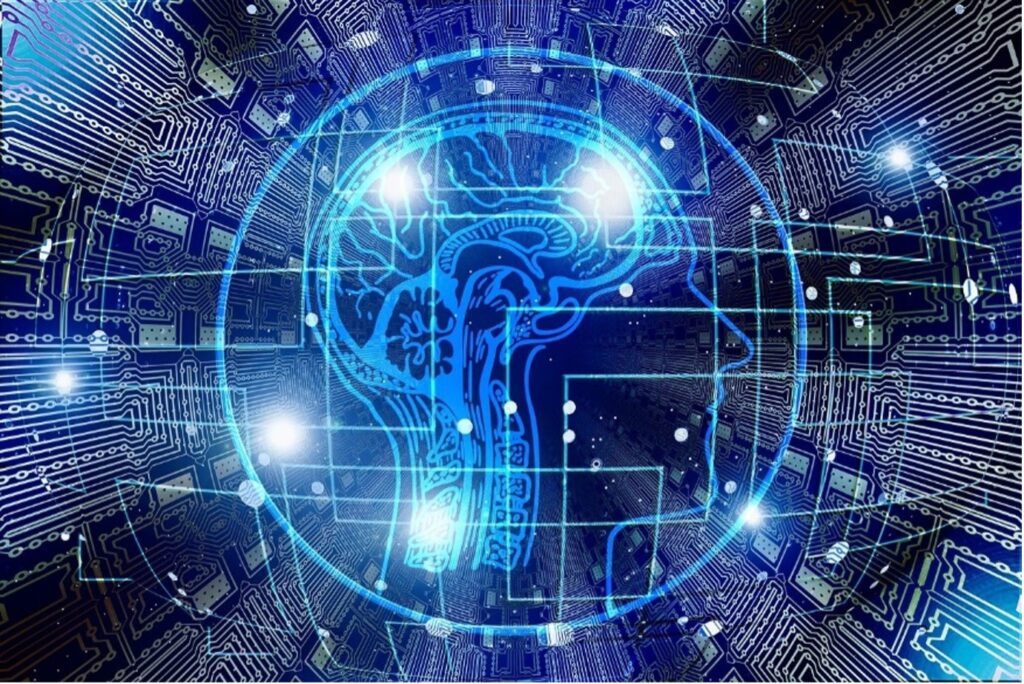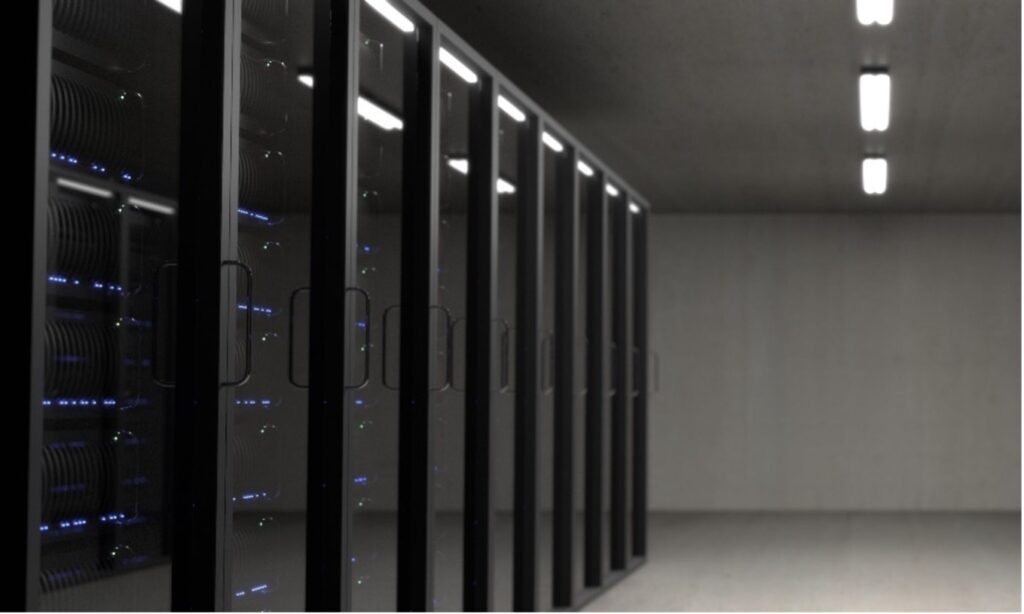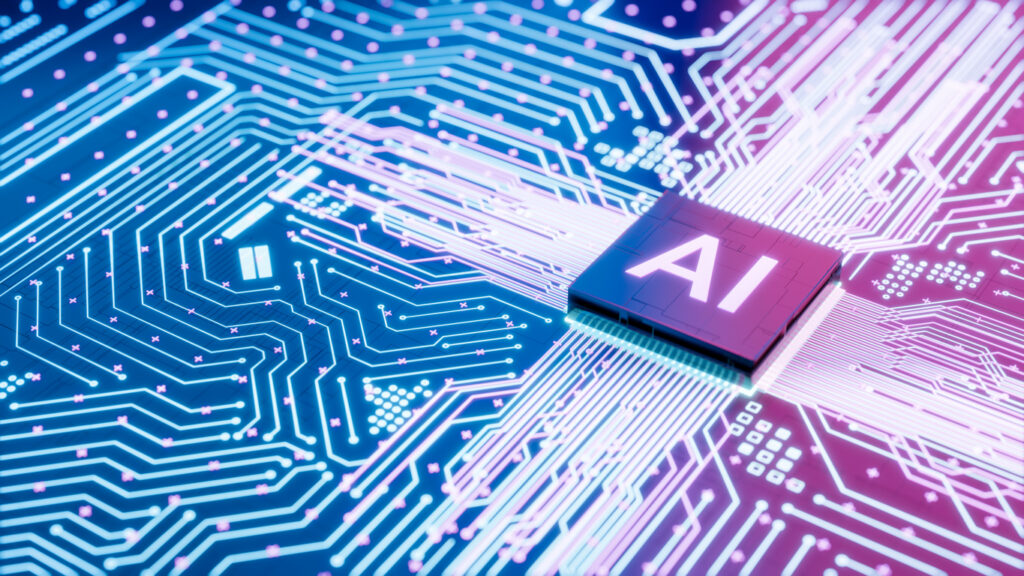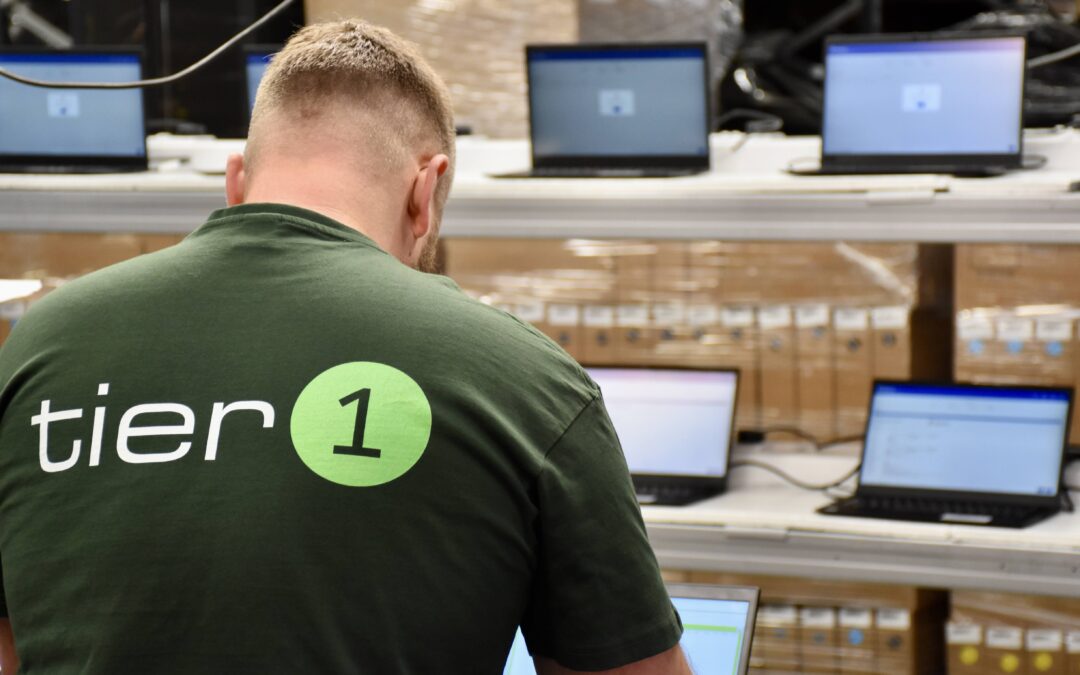Ask ChatGPT if AI is bad for the environment and you’ll get the following response. “The environmental impact of artificial intelligence is a complex and multifaceted issue”.
Driving digital transformation, AI is certainly moving up board meeting agendas at speed, innovating and revolutionising businesses. According to researchers from IDC, by the end of 2023, global spending on AI systems will exceed £75 billion. * Nine in ten organisations have a digital transformation strategy, with a significant proportion prioritising AI and machine learning within their plans. ^ And you can see why…
AI can step in for highly repetitive or dangerous tasks, dramatically improving operational efficiencies. Its real-time, data-driven insights improve analysis for faster, more effective decision-making. According to UK Research and Innovation, across the economy, the AI revolution could potentially increase productivity levels by 25%.
Despite the exciting innovative possibilities artificial intelligence presents, there’s mounting concern over its environmental footprint – when the climate is already in crisis.
Accuracy appears to have been the main developmental priority with little thought to the negative environmental consequences. So, whilst AI and machine learning are good for the economy, is AI bad for society? Is it possible that AI could do more harm than good?

Is AI bad for climate change?
Like any tech, AI’s environmental impact depends on how it’s developed, deployed, maintained, operated and finally, disposed of.
The ICT industry as a whole already generates an estimated 4% of total global carbon emissions – 60% higher than the aviation industry. * Half of those emissions are attributed to our data centres, which currently account for 2% alone – guzzling 10–50 times more energy, per floor space, than a standard office building. +
Moreover, forecasts made by Huawei’s senior researchers, predict that by 2025, data centres will account for a third of global energy consumption, fuelled by our extensive digitisation and, the meteoric rise of AI modelling. *
Energy consumption.
With increasingly elaborate, sophisticated, multi-layered data sets, AI models demand high to immense computational requirements to run and train them using power-hungry data centre servers. The more complex the model, the greater the energy consumption – leading to a sizeable carbon footprint.
Since 2012, the computing power needed to train pioneering AI models has doubled every 3.4 months – an estimated 300,000-fold increase from 2012 to 2018.
OpenAI. # *
In 2019, a University of Massachusetts study sought to determine how much energy popular large AI models consumed. Their results showed that training produced around 626,000 pounds of CO2, equating to 300 return flights between New York and San Francisco and nearly 5 times the lifetime emissions of the average car. # **
Water-cooling.
Much like us humans, AI cannot exist without water. For every kilowatt-hour of electricity used the servers, data centre cooling and humidity control towers require 3.8 litres of fresh water. ^^ However, it cannot be recycled. Water absorbs heat when it evaporates and cools the surrounding atmosphere – therefore, once dispersed, it is lost. Furthermore, water is also used for cooling at the power plants generating the energy.
Consequently, the water footprint of generative large language AI models, such as Google Bard and Chat-GTP is vast and will only increase further as AI workloads grow, and as public adoption soars.
A study by the Universities of California (Riverside) and Texas (Arlington) estimated that ChatGPT-3 uses half a litre of water for every 20 to 50 search queries and answers. Chat-GPT-4, released at the end of 2022, is expected to be even thirstier. +
Google’s 2023 Environmental Report states that their water consumption amounted to a staggering 5.6 billion gallons in 2022; a 20% increase, which has been linked to new AI initiatives. ++ Likewise, Microsoft’s data centre water usage increased 34% in 2022 to 1.7 billion gallons or more than 2,500 Olympic-sized swimming pools. ++
E-waste.
As if e-waste wasn’t already an enormous environmental issue with 57.4 million metric tonnes generated globally in 2021 alone, the World Economic Forum forecasts that by 2050, the total quantity of e-waste generated will exceed 120 million metric tons.
Server racks have an average lifespan of between 5-8 years, with most hardware being replaced every 5-6. ## As it continues to develop, AI technology will demand more advanced hardware; potentially decreasing longevity. This highlights the importance of responsible data centre decommissioning ITAD services and the ethical disposal of end-of-life IT assets.
By sustainably recycling components for reuse or remanufacturing, our e-waste won’t end up in landfill leaching toxic substances into our soils and waterways. Neither will we wastefully treat many of the earth’s finite precious metals, which are contained in our devices, as ‘single use.’
Ecosystem damage.
Much how eCommerce led to next-day or even same-day deliveries, artificial intelligence is likely to increase consumption habits and therefore waste, making it more important than ever for brands and their products to take a circular approach; eliminating our ‘take, make’ dispose’ linear culture.
Whilst the use of AI in agriculture can positively increase yield and productivity, it can also result in the overuse of pesticides and fertilisers, releasing Nitrous Oxide, a greenhouse gas with a global warming potential (GWP) of 298, compared to CO2’s 1. *** Overuse also destroys biodiversity, nutrient uptake and accelerates soil degradation. Reducing farmland productivity in the longer term, excessive chemical use places short-term financial gain over long-term environmental sustainability.
The manufacture of AI components, such as specialised chips and graphics processing units, along with data centre cooling, results in resource inefficiencies and over-extraction of raw materials. Whether it’s the virgin mining or freshwater withdrawal, this inevitably results in damage to our natural environment, its animals, biodiversity and threatens one of earth’s most valuable, life-sustaining resources.

Reducing the environmental impact of AI.
In itself, AI can mitigate the impacts of climate change, extreme weather events, map, monitor and forecast global warming, giving us more insight than ever before. However, with growth showing no signs of diminishing, just the opposite, in fact, there’s a need for far greater awareness when it comes to the high resource demands of AI tech. Organisations must turn their attention to the sustainability of AI, so we can drive innovation, and leverage the supercomputing benefits, whilst minimising its environmental footprint.
Renewable energy.
Wind and solar energy generation will significantly reduce the quantities of water required for cooling, along with preventing the use of fossil fuels and their associated emissions.
Microsoft claims that they will save a million litres of water per day by switching to solar energy in their ‘Sun Streams 2 Solar’ project.
Energy consumption may also be reduced extensively by designing and optimising energy-efficient hardware, networking systems and AI algorithms, from the outset. For companies using AI for sustainability, machine learning processes can help reduce energy waste and improve efficiency.
The majority of AI companies have pledged to make their systems sustainable by 2030, but critics voice that given the pace of its advance, this is not soon enough.
Water-efficient cooling.
Water-efficient cooling technologies, such as direct-to-chip liquid cooling or air cooling can effectively decrease water usage. Likewise, responsible water management, like rainwater harvesting, will limit freshwater reserve withdrawals and limit local drought events.
AI sustainability algorithms themselves can minimise power, improve water efficiencies and optimise training processes. Google uses a hyper-local, data-driven algorithm to combine air, water and refrigerants. As cooling is continuous and costly; by locating new data centres in consistently cool climates, such as Nordic countries, Google is improving both economic and environmental efficiencies.
Accountability.
A sustainable AI future can be achieved through a collaborative culture of information sharing, environmental responsibility and regulation. Legislative controls must encourage innovation and investment in ethical machine learning and AI development, while protecting the planet.
Whilst the EU already leads the way with the WEEE legislation governing e-waste, and the new Corporate Sustainability Reporting Directive 2023, stricter controls are required globally.
Accurate measurement of the true environmental footprint is challenging considering the secrecy surrounding the AI training methodologies implemented. Greater transparency is required, along with an industry-wide collaboration between enterprise leaders, governments and tech giants working together to mitigate the impact.

AI will undoubtedly enhance human capabilities significantly, but to maximise the opportunities, we must minimise the harmful impacts from the extensive resources needed to train models.
However, much like it can be used to fight and facilitate cybercrime, AI presents a double-edged sword. As Chat-GPT states, AI’s environmental impact is multifaceted – and therefore, it demands a multifaceted approach to mitigation.
A more sustainable future of AI is achievable through increased awareness, accountability and a collaborative approach. But this demands proactivity and the development of counteractive measures to reduce fossil-powered energy consumption, limit water-cooling and prioritise a secure, circular approach to the secure IT asset disposal of AI hardware.
AI has the power to create more than it can potentially destroy. However, with the climate already deep in crisis, responsible mitigation is essential. Before it becomes unmanageable, AI strategies must tackle the wider impact of our rapid technological advancement head-on to ensure that technology and nature coexist, side-by-side.
*Scientific Computing, ^Consultancy UK, +Gartner, #Earth, **MIT Technology Review, ^^Times of India, ++ABP Live, ##ProMAX Systems, ***National Atmospheric Emissions Inventory.
At tier1, our fully circular, IT asset disposition services include on-site data erasure and data centre decommissioning.
Designed to help busy CIOs and CISOs deliver sustainable IT solutions and to protect company data, our environmentally friendly ITAD services, include device and server upgrades, asset refurbishment and, as a last resort, recycling – which provides secondary components for the reverse supply chain.
To find out more about any of our data erasure services or our 5-star resale platform, contact our friendly team on 0161 777 1000 (Manchester), 01621 484380 (Maldon) or visit www.tier1.com
Resources.
Earth, Consultancy UK, Scientific Computing UK, Emerald, MIT Technology Review, Times of India, ABP Live, UK Research and Innovation, Round Up, ProMax, Gartner, National Atmospheric Emissions Inventory.



